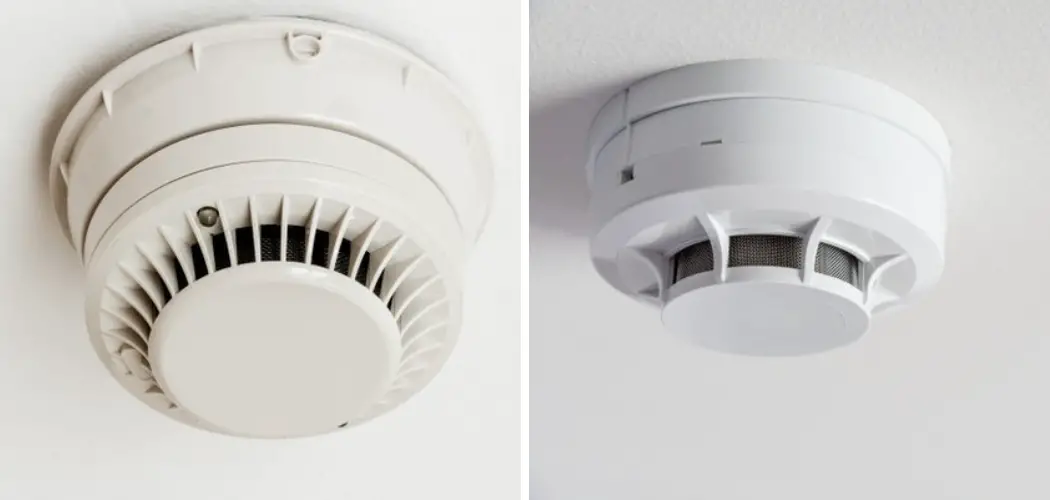Are you worried that your smoke detector is not just for fire but also for spying on you? With technology advancing rapidly, it’s not uncommon for people to be concerned about their devices’ potential surveillance capabilities.
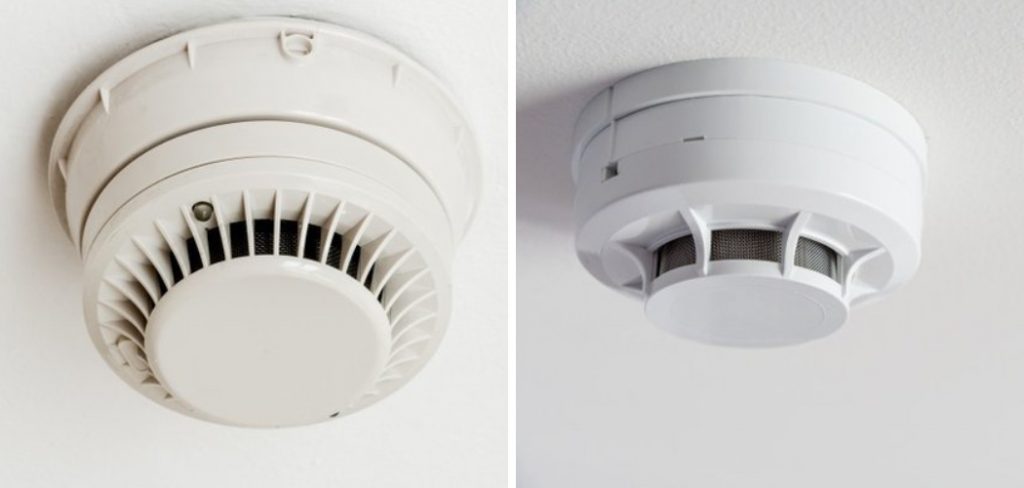
In an era where privacy concerns are incessantly escalating, the security of one’s living spaces has never been more paramount. Surprisingly, one of the most overlooked potential breaches of privacy could be lurking within a device as innocuous as your smoke detector.
Designed to be our silent guardians against fire-related emergencies, smoke detectors have unfortunately also become a potential vessel for unwelcome surveillance.
This guide aims to describe how to tell if your smoke detector is bugged , outlining key indicators and steps to ascertain whether your privacy is compromised by a bugged device.
What are the Benefits of Bugging a Smoke Detector?
Before diving into the signs of a bugged smoke detector, it’s important to understand why someone would want to bug one in the first place.
One reason could be for surveillance purposes, particularly if the device is strategically placed in an area where individuals tend to congregate or share sensitive information. A smoke detector can provide an inconspicuous and plausible cover for a hidden camera or microphone.
Another reason could be for sabotage, as a bugged smoke detector can disrupt the functioning of other security systems in the house, leaving it vulnerable to outside threats.
Regardless of the motives behind bugging a smoke detector, the consequences can be severe and invasive.
What Will You Need?
To determine if your smoke detector is bugged, you will need a few supplies. These include:
- A ladder or step stool if your smoke detector is mounted on the ceiling.
- A flashlight or headlamp to help with visibility.
- A screwdriver is needed in case you need to open up the detector for further inspection.
Once you have these supplies, you can begin your investigation.
8 Effective Signs on How to Tell if Your Smoke Detector is Bugged
Step 1. Unusual Behavior:
Detecting unusual behavior in your smoke detector can be the first sign that it might be bugged. This can manifest in various ways, including:
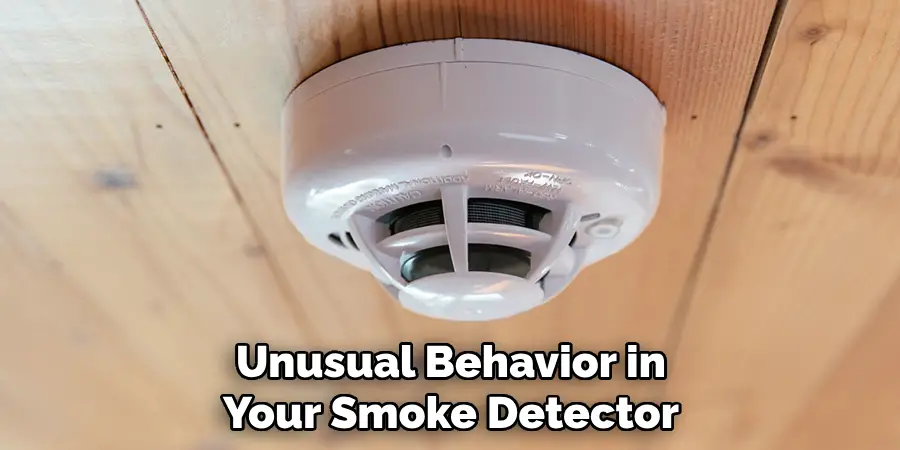
- Unexpected Noises: If you hear inexplicable sounds emanating from your smoke detector, such as buzzing, clicking, or even faint voices, it could indicate the presence of a surveillance device.
- Unprompted Activation: A smoke detector that activates without any signs of smoke or fire or flashes lights erratically may be compromised. While false alarms do happen with smoke detectors, repeated instances without a clear cause should raise suspicions.
- Difficulty with Wireless Connections: If your smoke detector is part of a smart home system, any sudden or unexplained disruptions in its connectivity with other devices might suggest that it’s being manipulated by external means.
Recognizing these unconventional behaviors serves as a critical first step in identifying whether your privacy is at stake, guiding you toward further investigation and remediation actions.
Step 2. Physical Anomalies:
Inspecting your smoke detector for any physical oddities is a vital step in determining if it has been tampered with. Look out for:
- Unfamiliar Components: An easy-to-spot sign of a bugged device is the presence of components that don’t seem to belong. This could be anything from extra wires, unusual lights, or even tiny lenses that could indicate a hidden camera.
- Seal Tampering: Check if the smoke detector seems to have been opened or if the sealing stickers are broken. Tampering with the device’s casing could suggest someone tried to insert surveillance equipment.
- Mismatched Parts: If the smoke detector has been disassembled for bugging, parts may not fit perfectly. Look for any misalignment or gaps that seem out of place.
Conducting a thorough physical inspection can reveal tangible evidence of tampering, leading you one step closer to confirming whether your smoke detector has been compromised for surveillance.
Step 3. Electromagnetic Field (EMF) Variations:
An increase in the electromagnetic field around your smoke detector may signal the presence of a bugging device. Bugging devices, especially those with transmitting capabilities, often emit higher levels of EMF radiation. To check for this:
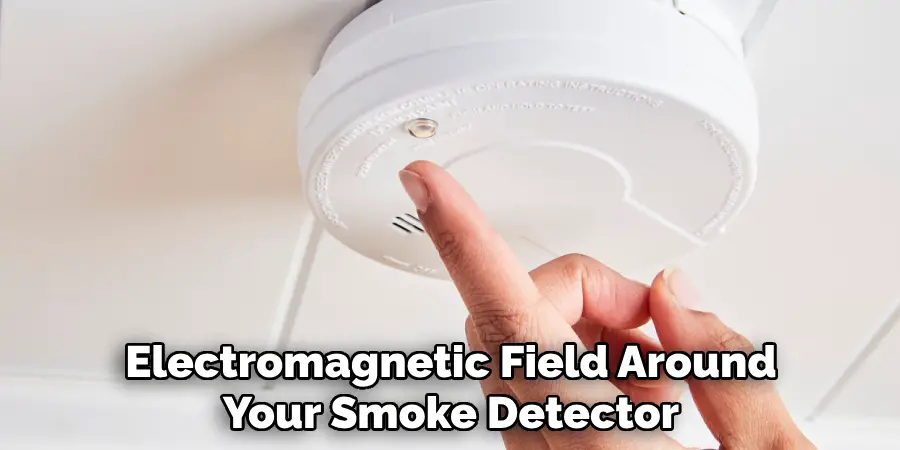
- Use an EMF Meter: Employ an EMF meter near the vicinity of your smoke detector. Normal smoke detectors have a minimal electromagnetic field. Therefore, an unusual spike in EMF readings could indicate hidden electronic components.
- Compare Readings: Take readings in various locations around your house to establish a baseline level of EMF radiation. Any significant deviation in the readings near your smoke detector compared to the rest of the house should raise suspicions.
- Check for Patterns: Notice if the EMF levels spike at certain times, which could hint at active transmission from a bugging device.
Utilizing this method requires attentiveness to detail and patience, but it can be an effective tool in detecting anomalies that suggest your smoke detector is used for more than its intended purpose.
Step 4. Technical Interferences:
Another critical aspect to consider when suspecting your smoke detector is bugged revolves around technical interferences it may cause or experience. Such interferences often manifest when unauthorized devices interfere with the normal operation of other electronic devices in your area. To identify these, pay attention to:
- Disturbances in Electronic Devices: Keep an eye out for unexplained interference on your TV, radio, or when making phone calls. If these disturbances happen only in specific areas of your home, particularly near the smoke detector, it may indicate surveillance equipment is being used.
- Wi-Fi or Bluetooth Connectivity Issues: Sudden and persistent difficulty connecting or maintaining connections with your Wi-Fi or Bluetooth devices could suggest malicious devices are operating nearby. Since bugged smoke detectors might utilize wireless technologies to transmit information, they can disrupt your regular wireless communications.
- Anomalous Device Behavior: Any unusual activity from smart devices in your home, like unexpected activations or commands not initiated by you, could be a sign of interference caused by a bugged smoke detector.
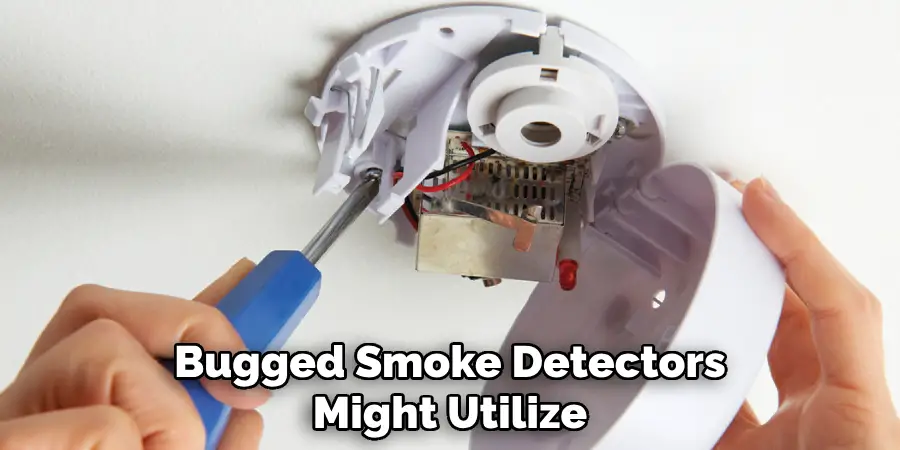
Monitoring for these technological disruptions offers a non-invasive way to detect potential surveillance, guiding you toward uncovering the truth behind your suspicions.
Step 5. Technical Analysis and Expert Consultation:
If, after following the previous steps, your suspicions still persist, it’s time to consult with a professional. A technical analysis conducted by an expert can provide definitive answers. Here’s how to approach it:
- Seek Professional Help: Contact a professional security expert or a company specializing in electronic surveillance detection. They possess the specific tools and knowledge to detect and neutralize sophisticated bugs.
- Document Your Findings: Before the consultation, prepare a list of all the odd behaviors, physical anomalies, EMF variations, and technical interferences you’ve observed. This will aid the expert in their investigation.
- Consider a Full Sweep: A comprehensive security sweep of your home, not just the smoke detector, might be recommended. Bugging devices can be small and placed in various locations, so a full sweep ensures nothing is missed.
Engaging a professional ensures that any bugging devices are accurately identified and removed, restoring your privacy and peace of mind. It also provides an opportunity to enhance your home’s security measures against future surveillance attempts.
Step 6. Modernizing Your Security Infrastructure:
After identifying and addressing any immediate concerns regarding bugged smoke detectors, the next essential step is to modernize your security infrastructure. This proactive approach not only safeguards against future breaches but also enhances your overall security posture. To modernize your security, consider the following actions:
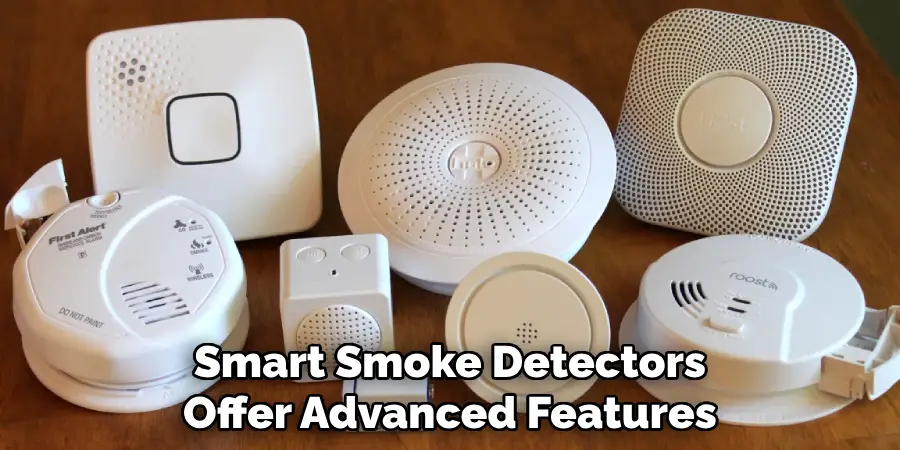
- Upgrade to Smart Smoke Detectors: Smart smoke detectors offer advanced features such as remote monitoring, which can notify you of any unusual activity even when you’re away from home. These devices often come with built-in security measures to prevent tampering.
- Implement a Secure Home Network: Strengthen your home network security by using strong, unique passwords, enabling network encryption, and regularly updating firmware on all connected devices. This reduces the risk of unauthorized access.
- Install Surveillance Cameras: Consider the strategic placement of surveillance cameras to monitor your home’s entry points and sensitive areas. Ensure these cameras are secure and have encrypted connections to avoid being compromised.
- Regular Security Audits: Conduct regular security audits of your home’s electronic systems to check for vulnerabilities or signs of tampering. Hiring a professional for an annual check-up can be a sound investment in your privacy.
- Educate Yourself and Family: Stay informed about the latest in security technology and potential threats. Educating all household members on best practices for digital security can help maintain a vigilant stance against surveillance.
By implementing these steps, you will not only address the immediate issue of a potentially bugged smoke detector but also fortify your home against the evolving landscape of electronic surveillance, ensuring your privacy and peace of mind in the digital age.
Step 7. Regular Review and Adjustment of Security Protocols:
To ensure ongoing protection against surveillance and unauthorized access into your home, it is critical to regularly review and adjust your security protocols. Technology and surveillance methods continuously evolve, which means your defenses must adapt accordingly. Set a schedule to:
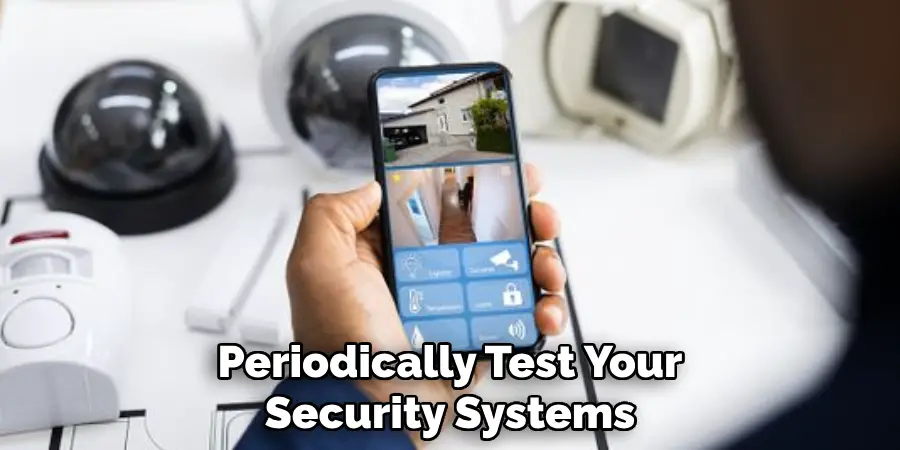
- Update Security Software and Hardware: Keep your security software, firmware, and devices up to date with the latest patches and versions. Manufacturers often release updates that fix vulnerabilities that surveillance devices could exploit.
- Re-evaluate Your Security Needs: As your family grows or changes, as well as technological advancements occur, your security needs may evolve. Regularly assess these needs to determine if additional measures are necessary.
- Test Your Systems: Periodically test your security systems, including smoke detectors, surveillance cameras, and alarms, to ensure they are functioning correctly. This also helps identify any potential weaknesses in your security setup.
- Stay Informed on Surveillance Tactics: Keep abreast of new surveillance techniques and tools that could potentially be used to infiltrate your home. The more informed you are, the better prepared you’ll be to counteract these threats.
- Seek Feedback from Professionals: Invite a security professional to review your security measures periodically. They can offer valuable insights and suggest improvements based on the latest trends and technologies in home security.
Adhering to a regular review and adjustment schedule for your home’s security protocols can significantly reduce the risk of surveillance and unauthorized access, ensuring that your private life remains just that—private.
Step 8. Response Plan for Detected Surveillance:
In the event that your surveillance countermeasures confirm the presence of unauthorized surveillance devices, having a clear response plan is essential. This step focuses on the immediate actions and long-term strategies to effectively mitigate any damage and prevent future incidents. Here’s what to include in your response plan:
- Immediate Action: Upon detection of a surveillance device, document the discovery without tampering with it. This evidence can be crucial for legal proceedings or police reports.
- Contact Authorities: Notify local law enforcement or a specialized agency to report the incident. Their expertise will be invaluable in safely removing the device and conducting a thorough investigation.
- Review and Strengthen Security Measures: Analyze how the surveillance device compromised your security. Use this insight to upgrade your security protocols and infrastructure to seal off vulnerabilities.
- Legal Consultation: Consider consulting with a legal professional who specializes in privacy and surveillance laws. They can provide guidance on your rights and any possible legal actions against the perpetrators.
- Mental and Emotional Support: Recognize the psychological impact such a breach can have on you and your household. Seeking support from counseling services can help you cope with feelings of violation and restore a sense of normalcy.
Building a robust response plan ensures you are prepared to act decisively against unauthorized surveillance, safeguarding your privacy and deterring future attempts at intrusion.
By following these steps and implementing proactive security measures, you can protect yourself and your loved ones from the risks of electronic surveillance.
5 Things You Should Avoid
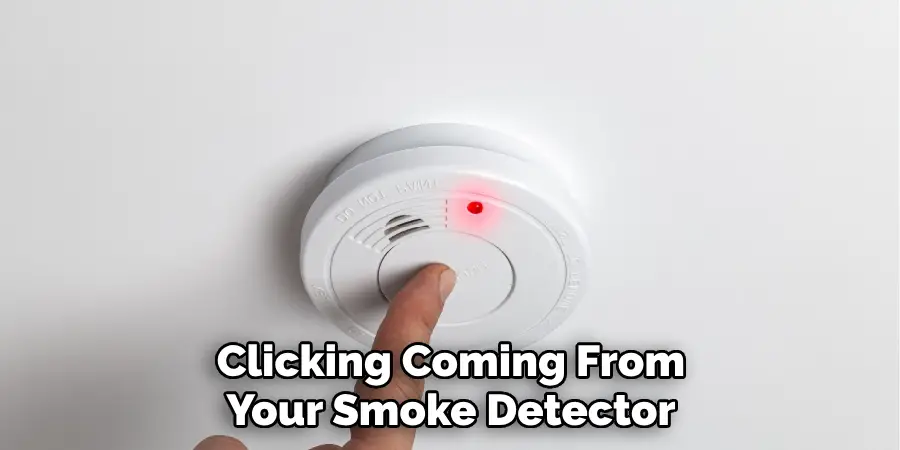
- Ignoring Unusual Sounds: Never overlook odd noises, such as beeping or clicking coming from your smoke detector that isn’t related to its normal functions. These could indicate tampering.
- Overlooking Physical Tampering: Don’t dismiss signs of physical interference. If your smoke detector appears to have been moved or if unfamiliar components are visible, this may suggest it’s been compromised.
- Disregarding Battery Issues: If your smoke detector’s battery is draining faster than usual without a clear reason, it could be a sign that the device is bugged and using additional power for unauthorized functions.
- Skipping Regular Inspections: Failing to conduct regular checks on your smoke detectors can lead to missed clues of tampering. Regular inspections can help identify any unusual modifications or additions.
- Neglecting to Consult Professionals: If you suspect your smoke detector has been bugged, avoid trying to fully investigate or resolve the issue on your own. Consulting a professional can ensure a thorough examination and preserve the integrity of any potential evidence.
By avoiding these key mistakes, you can better protect yourself and your home from potential surveillance or other security threats.
What Does 3 Beeps on Smoke Detector Mean?
If your smoke detector is beeping three times in a row, it could indicate an issue with the device’s functionality. This type of beep pattern is typically accompanied by the red light on the detector flashing rapidly.
There are several possible causes for this type of beeping, including a low battery, smoke or dust buildup inside the detector, or malfunctioning sensors. It’s important to immediately address the issue and determine the cause in order to ensure the smoke detector is functioning properly.
If changing the battery or cleaning out any buildup doesn’t resolve the beeping, it’s recommended to consult a professional for further assistance. Ignoring a malfunctioning smoke detector can put your home and safety at risk.
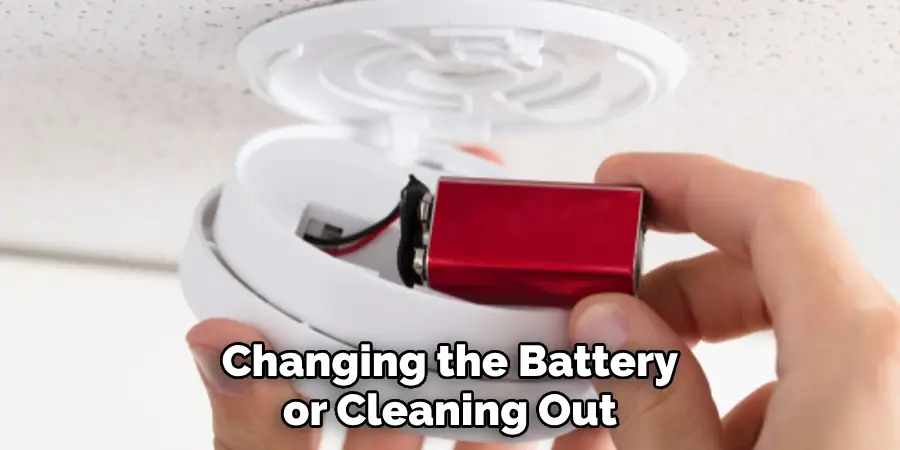
Additionally, regularly testing your smoke detectors and replacing batteries every 6 months can help prevent these types of issues from arising. It’s also important to note that smoke detectors should be replaced every 10 years to ensure optimal functionality. Always stay aware and proactive when it comes to your home’s safety and security.
Is My Smoke Alarm Recording Me?
While it’s unlikely that your smoke detector is being used to record you, it’s not entirely impossible. Some newer smart smoke detectors may have the capability to record audio or video for added security measures.
However, most traditional smoke detectors do not have this type of functionality and are solely designed for detecting smoke and carbon monoxide. It’s important to carefully read through any product specifications and settings before purchasing a smoke detector to ensure it aligns with your privacy preferences.
If you have concerns about the possibility of your smoke alarm recording you, opt for a basic traditional detector or consult with a professional for further guidance. Keeping yourself informed and making informed choices can help protect your privacy and security in your home.
Conclusion
How to tell if your smoke detector is bugged involves attentiveness to unusual signs and proactive measures. Key indicators include unfamiliar sounds, signs of physical tampering, unusually fast battery drainage, and functional irregularities, such as unexplained beeping patterns.
Regular inspections and consulting professionals when suspicions arise are crucial steps to identifying potential security breaches. In our era of advanced technology, where smart devices are becoming the norm, it’s increasingly important to stay informed about the capabilities of household devices, including smoke detectors.
By adhering to these guidelines and maintaining a vigilant approach to home security, you can mitigate the risk of your smoke detector being used for unauthorized surveillance and ensure the safety and privacy of your home environment.

